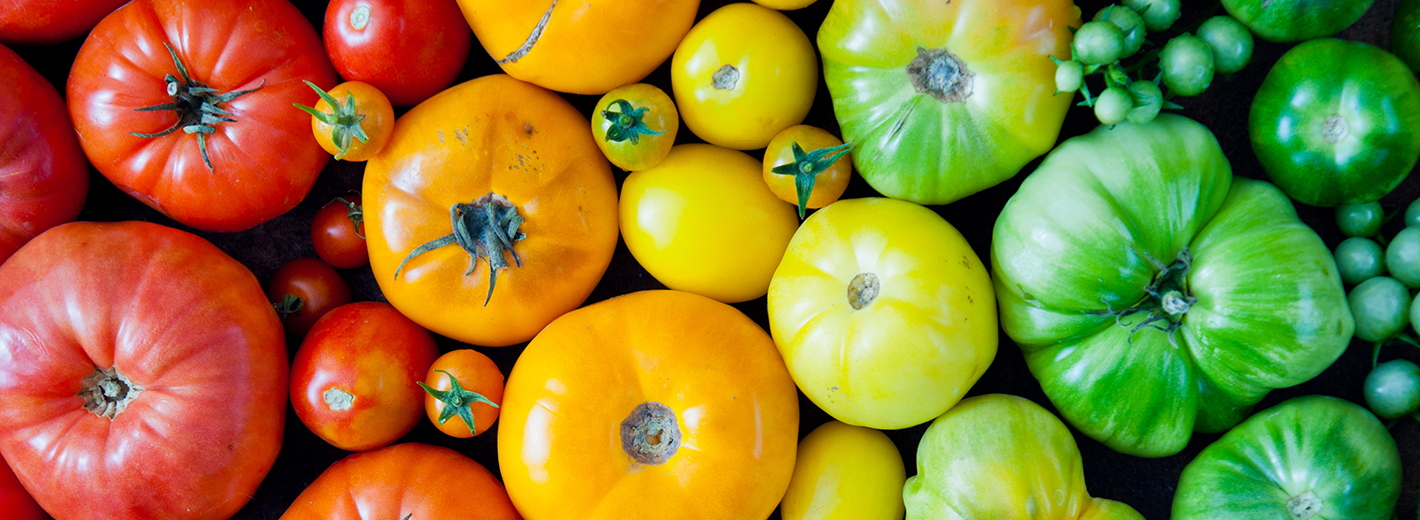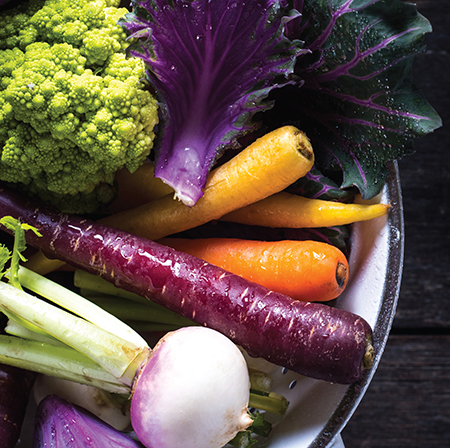
Wellness Tips: Why “Eating the Rainbow” Is the Key to Wellness
- by bonappetit
I’ve heard that eating a “beige diet” isn’t good for you. What color is the healthiest?
From colorful vegetable bowls to layered smoothies, “eating the rainbow” has never been more on trend. Beyond creating an Instagram-worthy dish, colorful plates are aesthetically pleasing, which can make the eating experience more enjoyable. But the real benefit lies in all of the nutrients you get from painting your plate with an array of colorful produce.
So, if we know that coloring our plates healthy is good, the question remains: Is one color better than another?
The short answer is no. The pigment of various fruits and vegetables actually comes from the presence of plant chemicals known as phytonutrients and can indicate a lot about the food’s health benefits. Because no one color or single food group contains all the necessary nutrients needed for human life, consuming a variety of different colored foods is the best way to make sure you get everything you need. Yes, that means that even foods deemed to be a “superfood” — like kale or blueberries — are not enough on their own. We recommend aiming for at least three different colors of produce on your plate at each meal (breakfast counts, too!).
Red
The vibrant reds and pinks of tomatoes, pink grapefruit, watermelon, and other foods are produced by a carotenoid (a plant pigment) called lycopene. Research shows eating lycopene-rich foods may reduce the risk of stroke and prostate cancer.
Orange/Yellow
Beta-carotene, which gives foods like carrots, oranges, cantaloupe, and sweet potatoes their bright orange color, is converted to vitamin A in the body. Vitamin A is essential for vision and immune function and is also an antioxidant that may help reduce the risk of developing heart disease or cancer.
Green
It’s no secret that greens are nutrient-packed, and we can thank antioxidants such as lutein and zeaxanthin — which may protect against age-related eye diseases — for giving dark leafy greens some of their powerful health benefits. Increasing the consumption of cruciferous vegetables such as Brussels sprouts are also found to promote cardiovascular health and overall longevity. A good general rule of thumb is the deeper the green, the more nutrient dense.
Blue/Purple
Blue and purple foods typically contain anthocyanins, which may help reduce the risk of cardiovascular diseases, cancers, and diabetes. Anthocyanins are present in many fruits, including cherries, blueberries, blackberries, and cranberries, as well as colored vegetables and grains such as purple corn, red rice, black rice, purple carrots, and blue potatoes.
 Overreliance on refined, colorless carbs — we’re looking at you, bread, pasta, and cereal! — give beige foods their bad rap. However, before you completely discount all beige foods, know that white fruits and vegetables including mushrooms, potatoes, parsnips, and brown Bosc pears as well as whole grains pack in plenty of vitamins, minerals, and antioxidants, too, so don’t hate on them.
Overreliance on refined, colorless carbs — we’re looking at you, bread, pasta, and cereal! — give beige foods their bad rap. However, before you completely discount all beige foods, know that white fruits and vegetables including mushrooms, potatoes, parsnips, and brown Bosc pears as well as whole grains pack in plenty of vitamins, minerals, and antioxidants, too, so don’t hate on them.
Beyond the benefits of individual nutrients listed here, ongoing research suggests that different phytonutrients found in many fruits and vegetables can have compounding effects, meaning eating the food instead of taking a supplement could provide even more benefits than we currently know. In addition, scientists are still discovering the benefits of many antioxidants or phytonutrients — another reason that supplements just aren’t as good for you as food.
Variety is key, and eating seasonally is an easy way to introduce that your plate. The good news is, there are plenty of options in each color category, so you can color your plate and enjoy it, too.
At Bon Appétit, we know there’s a lot on your plate that you worry about. That’s why we have a team of registered dietitian nutritionists ready to answer your nutrition questions about which food choices will help you avoid unwanted pounds, work or study (and sleep!) better, and form long-lasting healthy eating habits. Email your questions and feedback to [email protected].